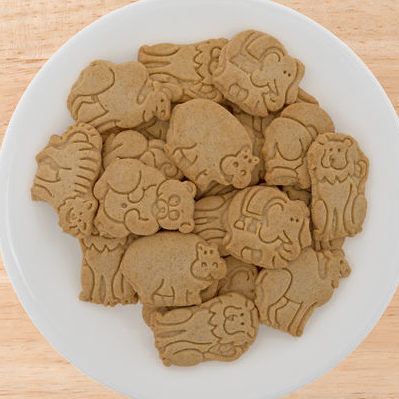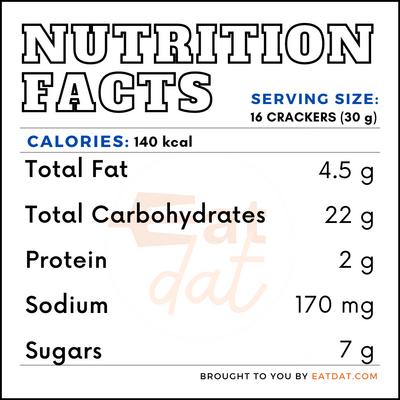
Animal Crackers
What are Animal Crackers?
Animal crackers are not crackers. They are actually small cookies that are cut and baked in the shape of animals. These include common circus or zoo animals such as lions, elephants, bears, and tigers, but other animals have also been used. Over 40 million packages of Barnum’s Animal Crackers are sold each year all over the world.
- Recently, Nabisco redesigned its packaging to set the animals free because of a request from animal rights activists.
- These animal-shaped cookies are so popular they even have their own holiday every year on April 18th.
According to Thrillist, the top 10 best animals in the animal cracker collection are:
- Lion
- Zebra
- Monkey
- Giraffe
- Elephant
- Cougar
- Sheep
- Tiger
- Rhinoceros
- Koala
Origin of animal crackers
England first introduced animal-shaped biscuits or ‘animals’ to the United States in the 1800s. As they grew in popularity, the baking company Stauffer’s began producing them domestically. The first known recipe for these cookies was printed in 1883 in a commercial cooking book. Later in 1902, Nabisco also began producing these cookies but named them after the famous showman P.T. Barnum.
Nabisco’s Barnum’s Animals would soon become the most popular brand of these cookies. In 1948, they renamed the cookies to be called Barnum’s Animal Crackers and the name simply stuck. As time went on and manufacturing processes improved, different types of animals would emerge in cookie form. Today, the company is still producing these animal-shaped cookies at an astonishing rate of twelve thousand animal crackers per minute.
Function
While these fun animal-shaped cookies are a beloved children’s snack, they’re also very handy for baking. You can use animal crackers in a variety of ways in the kitchen from pie crusts to pudding. Crumble these cookies up for added crunch on a cupcake or as an ice cream topping. Candy bark and mini ice cream sandwiches are much more fun with the wild shapes these cookies provide, as well.
Nutrition
These cookies are often regarded as low-calorie treats that are a good source of calcium and perfect for snacking. A serving of 16 crackers has:

These cookies should still be consumed in a balanced diet and paired with regular exercise.
Commercial production
The commercial production of these animal-shaped cookies begins with mixing together flour, butter, sugar, and vanilla to make a sweet dough. Then, the dough is flattened using mechanical rollers to create long, thin sheets. These sheets of dough pass through another machine that stamps them with animal shapes. Leftover dough is separated and sent back to the processing line to be reused while the animal cookies head for the oven.
The animal crackers are baked until they are lightly golden. For some varieties, after baking, chocolate or sweet icing and sprinkles are added on top of the cookies. Once the cookies are cooled, they are inspected before being sent off for packaging. After they are packaged, they are stored in a cool, dry place until sold.
Uses
Animal crackers can please most palates with their plain and frosted varieties. However, to enjoy these cookies to the fullest, it’s essential to store them properly. Whether they’re store-bought or homemade, it’s best to keep these cookies in an airtight container. These treats should be kept cool and dry for optimal storage. If they’re stored well, they can safely be stored for several weeks.
Animal cracker recipes
These sweet animal cookies can be enjoyed on their own or used as an ingredient in desserts. Here are some popular recipes:
- Homemade Animal Crackers
- Coney Island Cheesecake
- Circus Animal Cookie Milkshake
- Animal Cracker Fudge
- Circus Animal Truffles
FDA regulation
The Food & Drug Administration defines packaged cookies and crackers as nonperishable processed foods. These products must be labeled with this term to clarify that it is not subject to rapid decay or deterioration. The FDA also regulates the reference amounts and label statements that commercial producers can use on cookies. In the past, the FDA has recalled animal crackers from Stauffer Biscuit Co. for not properly declaring a milk ingredient.
References
“Origins of Animal Crackers.” Foodimentary.com, Foodimentary, 4 Mar. 2014, foodimentary.com/2012/04/18/origins-of-animal-crackers/.
Katz, Brigit. “After 116 Years, Animal Crackers Have Been Freed From Their Circus Cages.” Smithsonian.com, Smithsonian Institution, 22 Aug. 2018, www.smithsonianmag.com/smart-news/after-116-years-animal-crackers-have-been-freed-their-cages-180970110/.
Kennedy, Merrit. “No More Cages: New Animal Cracker Packaging Sets The Mighty Beasts Free.” NPR.org, NPR, 22 Aug. 2018, www.npr.org/2018/08/21/640584749/no-more-cages-new-animal-cracker-packaging-sets-the-mighty-beasts-free?t=1596124213411.
“CFR – Code of Federal Regulations Title 21.” Accessdata.fda.gov, U.S. Food & Drug Administration, 1 Apr. 2019, www.accessdata.fda.gov/scripts/cdrh/cfdocs/cfcfr/CFRSearch.cfm?fr=170.3.
